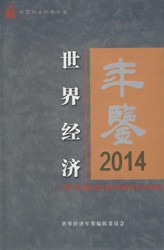《世界经济年鉴》创刊于1979年,迄今为止已出版29卷。从2014年卷开始,本年鉴改按学科年鉴来编撰了。
编撰世界经济学科年鉴的主旨,在于满足本学科一线学者和政策决策者等主流读者的需求,塑造世界经济学学科品牌。为建设马克思主义的坚强阵地、哲学社会科学的最高殿堂、党和国家的思想库和智囊团,本年鉴必须明确世界经济学科的内涵与外延,集成展示全学科的所有研究成果,洞悉学科发展的全貌与潮流,增进学科内外的交融,促进世界经济机构和学人的发展。作为工具书,本年鉴不仅要呈现在纸页上,更应陈列在电子数据库中;不仅应陈列在图书馆,而且应主要陈列在每个从事涉外经济工作者的案头和移动终端;不仅是读者日常翻阅的工具书,更应成为世界经济学相关作者高频引用的基础文献。
具体而言,本年鉴具有如下功能。其一,有助于学人(学者、教师、学生)了解本学科全貌,包括议题、理论流派、实证研究方法、结论及待研究问题,有利于学术综述和政策综述的撰写、论文的选题和会议的组织。在学术上,它必须是世界经济学人门者的便捷通行证,是内行们学术跃升的加速器。其二,有助于经济决策者(政府决策者和企业决策者)了解本学科热点议题的动态、原因和结果,可探究特定经济关系的理论基础和实证结论,综述相关议题的政策选项,获得有益的决策参考。对于待深人研究的议题,政策部门可从中发现代表性机构和代表性学者,并同其进行科研合作。政府的科学基金管理机构可据此设立科研课题。可以说,本年鉴是决策者问计施策的必备锦囊,是世界经济实践同理论互动共进的平台。其三,有助于媒体从业者快速了解该学科的学术和政策热点,快速查找代表性机构和学者,便利专业访谈和约稿。
为实现上述功能,本年鉴拟包括四大内容模块。这些模块相互之间构成了“金字塔”:“塔尖”是综述(学术综述和政策综述),“塔身”是文献选介,“塔基”是机构和学人。通过这座金字塔,读者可以了解世界经济学的全貌,洞悉世界经济学的潮流;可专注于自己感兴趣的学、政、产特定内容,更有效地满足自身的特定需求;可便捷地了解世界经济相关机构和人物,促进世界经济学科网络内外的交流,提高世界经济学机构和学人的发展效率。
本年鉴覆盖世界经济学文献约4300篇,其中期刊论文308篇,智库文献1692篇,图书1724本,重要机构和国际组织文献574篇;中文文献1062篇,外文文献3236篇;相关作者4900余名。这些文献具有如下特点。其一,主要研究具有全球性效应的经济议题及各种议题中内含的世界经济运行规律。其二,研究者来自全球学、政、产各界,包括全球范围内的大学、公立和私营的研究机构尤其是智库机构、主要国际经济组织、重要的国别政府机构(如央行、财政部),其中智库为全球顶尖50家国际经济政策智库(美国宾州大学2013年排名)。其三,公开发布于学术期刊和机构网站。
为确保读者阅读的高效率,本年鉴编辑部参照世界主流标准,设立了如下规范。
其一,关于学科和专题的学科划分标准。研究议题凡具有全球性效应(研究对象或是世界经济总体,或是具有全球性效应的区域经济或国别经济)的文献,均为世界经济学文献。研究经济关系的文献,如果其首要关键词属于某子学科,则属于该子学科。以因果性经济关系为例,表示其结果的关键词就是首要关键词,该关键词的学科归属就代表该文献的学科归属。文献、课题、会议活动的学科归属均按此方法确定。机构和人物所属学科按其所发表文献、参与课题或会议的学科属性而定。子模块和专题的归属依此类推。
其二,综述文章的模板。综述包括内容提要、引文计量(主要发表刊物、议题和作者的分布)、主要议题及其结论与论证(理论、计量方法和样本)、评论(结论的可靠性,理论基础的坚实性、实证方法的妥当性、样本的适宜性以及文献的创新性),避免罗列文献。
其三,文献选介必要性的辨识和内容模板。特定文献的内容是否有必要选介,取决于其议题在学科中的重要性。选介内容包括如下要点:议题,结论,论证(理论、计量方法、样本),具体要点的多少取决于文献是理论性的还是实证性的,一般不超过200字。
其四,会议活动的介绍,包括会议主题、会期、主办方、主要议题、主要与会者。
本年鉴着力为读者带来便捷、高效的阅读体验。全部内容以子学科为主线,分为如下10个模块,即总览、全球宏观经济学、国际贸易学、国际金融学、国际投资学、国际发展经济学、世界经济统计学、全球治理、附录和索引。每个子学科模块下设如下子模块:综述、文献选介、国际会议、重要课题清单。在子模块“文献选介”中,按议题分设不同专题。附录包括重要的世界经济统计数据和文献来源,索引包括文献综引(按作者排序)和关键词索引。少数文献兼属多个子学科模块、子模块和专题,分列于相应位置,而不是仅置其中一处,以免读者来回翻找。此外,本年鉴倡导文本尽量用短句,文意简明扼要。
本年鉴由中国社会科学院世界经济与政治研究所主办,奉行开放办刊的方针,力推学、政、产三界携手,共绘世界经济学的“清明上河图”,促进学科繁荣、世界经济发展和中国复兴。
本年鉴是“学科年鉴”的首次转轨之作,在结构、内容、文风等方面进行了探索,待完善之处尚多,欢迎读者批评指正。
The Yearbook of World Economr started publication in 1979 and has published 29 volumes bynow.From Volume 2014,it began to be compiled by the style of academic subject.
The purpose of this yearbook is to meet the needs of mainstream readers in this subject,and tobuild the brand of world economics discipline.In order to construct solid base of Marxism,the highestpalace of philosophy and social sciences,the CPCC and the state's ideology and think-tank,thisyearbook must clarify the connotation and extension of the subject,exhibit the whole research fruits,enhance the integration of all sub-subject,and promote the development of relevant agencies and thescholars.As a reference,this yearbook is not only published as a book,but also as an electronic da-tabase;not only displayed in libraries,but also on desks and mobile terminals of those who are inter-ested;not only read usually,but also cited frequently.
Specifically,this yearbook has following functions.First,it helps scholars,teachers andstudents to understand the whole pattern of the subjects,including distribution of topics,theoreticalstreams,empirical methods and conclusions or views.Second,it is helpful to understand the trend,causes and effects of hot economic topics,and to explore the theoretical basis and empirical conclu-sions of specific economic relations.For the issues to be further studied,policy makers can find repre-sentative institutes and representative scholars and conduct research cooperation with them.Researchprograms can be set up by the management agencies of scientific funds.It can be said that this bookcan provide decision makers with necessary brocade sacks,and behave as a platform for the interac-tion of international economic practices with relevant economic theories.Third,it helps media to learnof hot academic and policy issues,to find relevant institutes,scholars and officials,to arrange pro-fessional interviews and to invite high-level manuscripts.
In order to achieve above functions,this volume contains four major modules that constitute ar-chitecture like a pyramid in each sub-subject.Along the pyramid,academic surveys and policy re-views are at the top,all relevant literature and brief introduction of important literature are the body,and relevant institutes and individual contributors are the base.
This volume covers about 4300 literature,including 308 journal papers,1,692 literature of think-tanks,1,724 books,574 literature of important institutes and international organizations,1,062 inChinese and other 3,236 in foreign languages and more than 4,900 authors.They have following charac-teristics.They mainly study economic topics with global effects and operating rules hiding in these top-ics.The contributors of literature are from the whole world,including universities,academic institutes,think-tanks,major international economic organizations,and important national agencies(such ascentral banks,the Ministries of Finance).Of which is the world's Top 50 International Economic Poli-cy Think Tanks(according the 2013 Rank of University of Pennsylvania).All literature is published inacademic journals or by presses,or released at corresponding institutes' official websites.
In order to provide high efficiency to readers,this yearbook has set up following paradigm alongworld mainstram standard.First,about the connotations of world economics and its sub disci-plines.The literature whose topics are on the whole world economy or on regional/national economy with global effects are of interest by this yearbook.For the literature on economic relationship,if itsprimary key words belong to one certain sub discipline,it should be classified as that sub disci-pline.For example,if one academic paper is on a causal economic relation,its dependent variable isregarded as the primary key word,and this paper should be appointed as the sub discipline to thatthe dependent variable belongs.The discipline attribute of all programs and conferences are also iden-tified by this method.The discipline attribute of institutes and contributors is determined by that oftheir literature,their programs and conferences.So do the connotations of sub modules and specialtopics.
Second,about the template of surveys and reviews.They includes abstract,quantitative analysisof indexed literature(distributions of involved publications,subjects and authors),distributions ofinvolved topics,conclusions and paradigms(relevant theories,empirical methods and samples),reliability of theoretical bases,appropriateness of empirical methods,suitability of samples and inno-vation of interested literature.
Third,identification of the literature to be briefly introduced and template to introducethem.Whether one specific document should be introduced or not depends on its contribution to theinvolved subject.The introduction template includes the followings:topic or question,conclusion anddemonstration(theory,quantitative method,sample).Which points should be included into thetemplate depends on whether attribution of this literature is theoretical or empirical style.In addition,the brief introduction of conferences includes its themes,organizers,agenda,main topics,mainspeakers and participants.
This yearbook attempts to provide readers with convenient and efficient reading experience.Allcontents of this volume are organized primarily by sub disciplines as the following 10 modules,name-ly,Overview,Global Macroeconomics,Discipline of International Trade,Discipline of Internation-al Finance,Discipline of International Investment,International Development Economics,World E-conomic Statistics,Global Economic Governance,Appendices and Index.Each sub discipline mod-ule consists of such modules:Academic Survey and Policy Review,Literature Show,InternationalConferences,and Major Academic Programs.The module Literature Show is divided into differenttopic categories.The Appendix module includes two academic surveys,statistic data on important as-pects of world economy,and distribution of literature covered by this yearbook.The Index includesIndex on Literature(sorted by authors) and Index on Key words.A small part of literature belongssimultaneously to a few sub disciplines,sub modules and topics,so located in correspondent placesof this volume for the sake of readers' convenience.In addition,this yearbook advocates for simple,tight and concise narrative such as short sentences and paragraphs.
This yearbook is hosted by the Institute of World Economics and Politics(IWEP),Chinese A-cademy of Social Sciences(CASS),steered by the policy of open compilation.As a platform,thisbook would like to push close cooperation among academia,government and business to create thepainting Riverside Scene at Qingming Festival of World Economics,promoting prosperity of this disci-pline,development of the world economy and Chinese renaissance.
This volume is the first trial to compile a discipline yearbook.There may be some defects in itsarchitecture,contents and styles.All comments and suggestions are welcome to make following vol-umes more perfect.
Editorial Committee of World Economic Yearbook
August 2014
